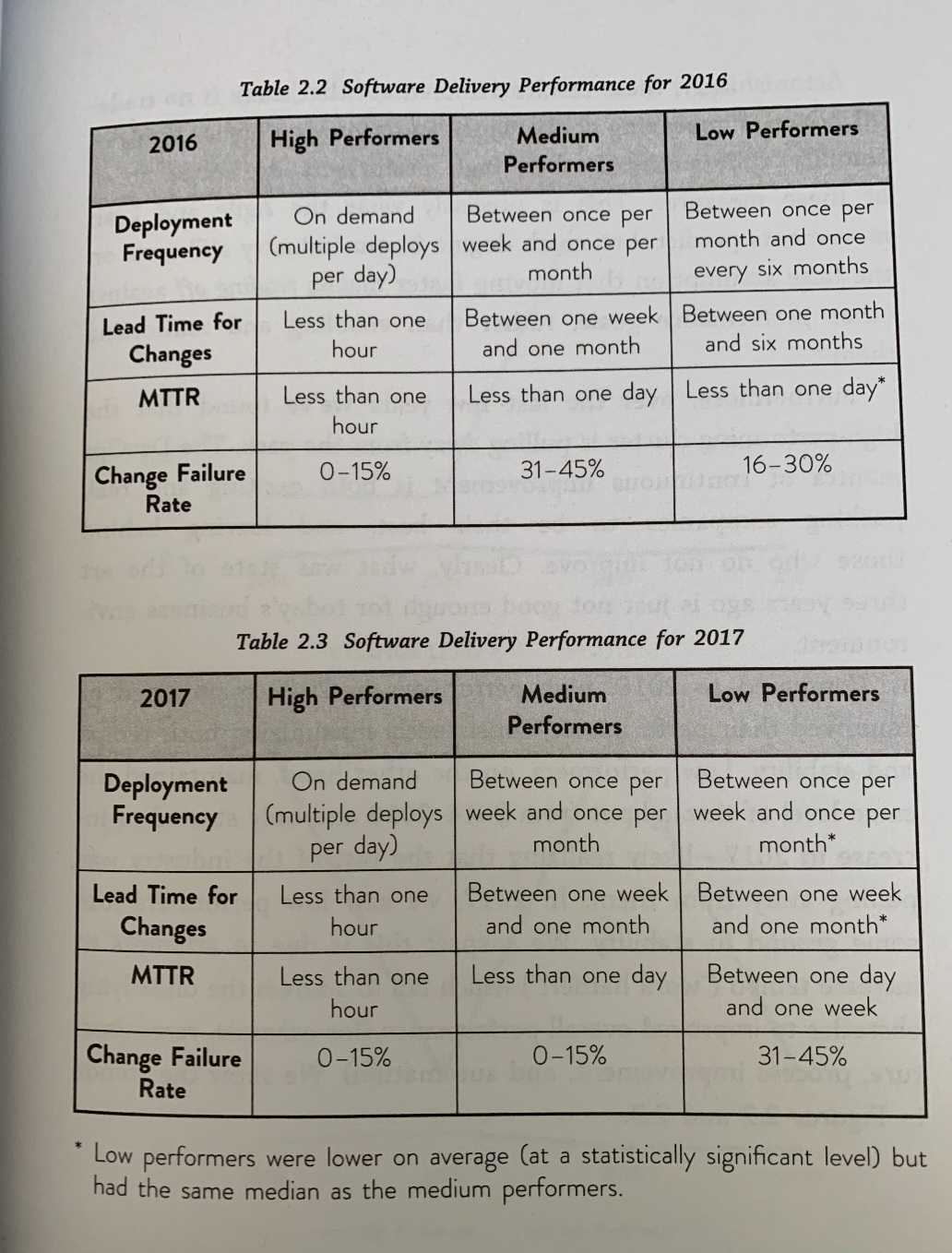Accelerate

Accelerate, a book co-authored by Nicole Forsgren, Jez Humble, and Gene Kim delves into the world of software development, focusing on the principles of Lean, DevOps, and their impact on organizational performance. The book draws from extensive research to uncover the practices that separate high-performing teams from the rest.
It addresses the pressing need for organizations to adapt and excel in the rapidly evolving technological landscape and sets the stage for understanding why high-performing technology organizations are crucial for success in today's competitive markets.
TLDR;
- Have transformational leadership.
- Promote a culture of collaboration, trust, learning and experimentation. Culture predicts both delivery and organizational performance as it determines employees job satisfaction level.
- Collaboration is key; who is on the team matters less than how team members interact and structure their work.
- Never use velocity to measure team productivity or compare teams; use it to measure capacity. Teams have different contexts and when velocity is used as a measurent tool, teams inflate their estimates and focus on completing as many stories as possible at the expense of collaboration with other teams.
- Get rid of deployment pain by adopting continuous integration and delivery.
- Adopt Trunk-based development.
- Failures should lead to inquiry, not scapegoating; don't punish employees for accidental human error, but rather treat it as an opportunity to improve observability and system guards to help prevent catastrophic failures.
- There's no trade-off between speed and stability for high performing organizations.
Key Findings
The authors introduce the concept of the "Four Key Metrics" that are crucial for measuring and improving the performance of a software development team. These metrics are often known as DORA metrics and include:
-
Lead Time / Cycle Time: The time it takes to move from a code commit to a successfully deployed product. Shorter lead times signify faster and more efficient development processes.
-
Deployment Frequency: This metric gauges how often code is deployed to production. It is a crucial indicator of a team's agility and responsiveness to change. A high deployment frequency is associated with increased innovation and faster time-to-market.
-
Mean Time to Recovery (MTTR) / Time to Restore Service: The time it takes to recover from a service outage or failure. This is a critical metric that reflects a team's resilience and recovery capabilities. Rapid response to incidents is vital in maintaining a seamless user experience.
-
Change Failure Rate: The percentage of changes that result in a failure. Low failure rates are indicative of robust development practices; high-performing teams experience fewer failures when introducing changes, showcasing the robustness of their processes
Delivery lead time and deployment frequency measure the team's velocity while mean time to recovery and change failure rate measure the quality and stability of a project.
By systematically calculating these metrics, organizations can strategically direct management and development teams towards improvement opportunities, showcase the tangible impact of engineering efforts on business outcomes, and gain insights that facilitate well-informed decision-making, ultimately leading to the prompt delivery of value to customers.

Furthermore, Accelerate sheds light on pivotal practices and cultural elements crucial for achieving high performance. These include continuous integration, continuous delivery, observability, transformational leadership, and a culture characterized by collaboration, trust, learning, and experimentation.
Despite the acknowledged truth that people are an organization's greatest asset, they often find themselves treated as replaceable resources. The book underscores the significance of valuing employees, emphasizing that when individuals are treated with respect, they are motivated to go above and beyond, propelling the organization toward success. Notably, the text highlights innovative approaches adopted by industry giants, such as Google's 20% time policy, which grants employees a dedicated portion of their work week for personal projects, and IBM's THINK Friday initiative, reserving Friday afternoons for uninterrupted learning without meetings.
In the realm of leadership, the importance of transformational leaders is emphasized. These leaders possess a visionary outlook, inspire team members, stimulate intellectual growth, provide support, and commend performance.
A transformative leader:
- Demonstrates a clear understanding of the team's goals and objectives.
- Grasps the organization's Objectives and Key Results (OKRs).
- Expresses positive sentiments about the team, fostering a sense of value among its members.
- Encourages individuals to explore opportunities beyond their comfort zones.
- Challenges team members to approach problems with fresh perspectives.
- Considers the feelings and perspectives of team members before making decisions.
In essence, the cultivation of a transformational leadership approach is identified as essential for achieving superior organizational outcomes.
Conclusion
As organizations continue to navigate the challenges of the digital age, the principles outlined in Accelerate serve as a roadmap for achieving excellence in software delivery and organizational success. By focusing on the four key metrics and adopting best practices, teams can not only keep up with the rapidly evolving tech landscape but proactively drive advancements and innovative solutions.
A combination of tools like GitHub, Jira and Swarmia or related tools provide a comprehensive way to measure developer productivity if you don't want to write scripts to calculate these.
